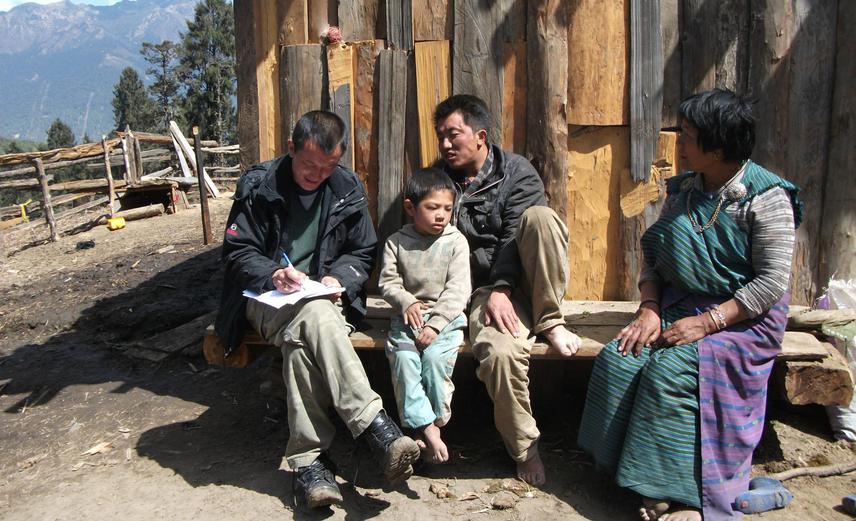Tshewang Dorji
To find a middle path where by grazing and regeneration of oak forests can be simultaneously incorporated without compromising the livelihood or conservation priorities.

Social survey with herders in winter.
Broadleaved forests dominated by brown oak (Quercus semecarpifolia Sm.) is a precious gift to the Himalayan forests as its presence is associated with rich biodiversity, good quality and quantity springs and subsistence farming. They harbour the remainder of a climax flora and fauna and are important from the conservation point of view. Grazing in these forests remains the single most important source of income to rural communities residing in and around these forests. Forest provides the richest source of fodder, and broadleaf forests are widely preferred for grazing due to rich fodder resources. Forest grazing by domestic cattle is largely practiced in these forests. In the last few decades or so, the dependence on these forests occurred on a large scale and overgrazing has posed a huge threat to these forests which are likely to change their character in future.
Studies conducted so far in the Himalayan range have indicated the failure of oak regeneration due to overgrazing but none came up with a possible solution to move forward. Our study and experiences indicated that complete exclusion of grazers is not desirable as it leads to thick growth of bamboos and brambles on the forest floor. Therefore, finding a middle path whereby grazing and oak regeneration can be simultaneously and sustainably incorporated without compromising the conservation of these forests will be a great relief to both farmers and foresters.
Through our project, we aim to fulfil this task of finding a middle path by exploring special designs; seedling shelters (plastic tubes placed over particular seedlings to shelter until they attain a height safe from grazing animals) to protect the desired species and at the same time allowing grazing animals to graze freely. The study is expected to provide a strategy of rural livelihood coexistence with nature supported by quantitative data and a strong knowledge-base for scientific understanding and management of oak forests in Bhutan.